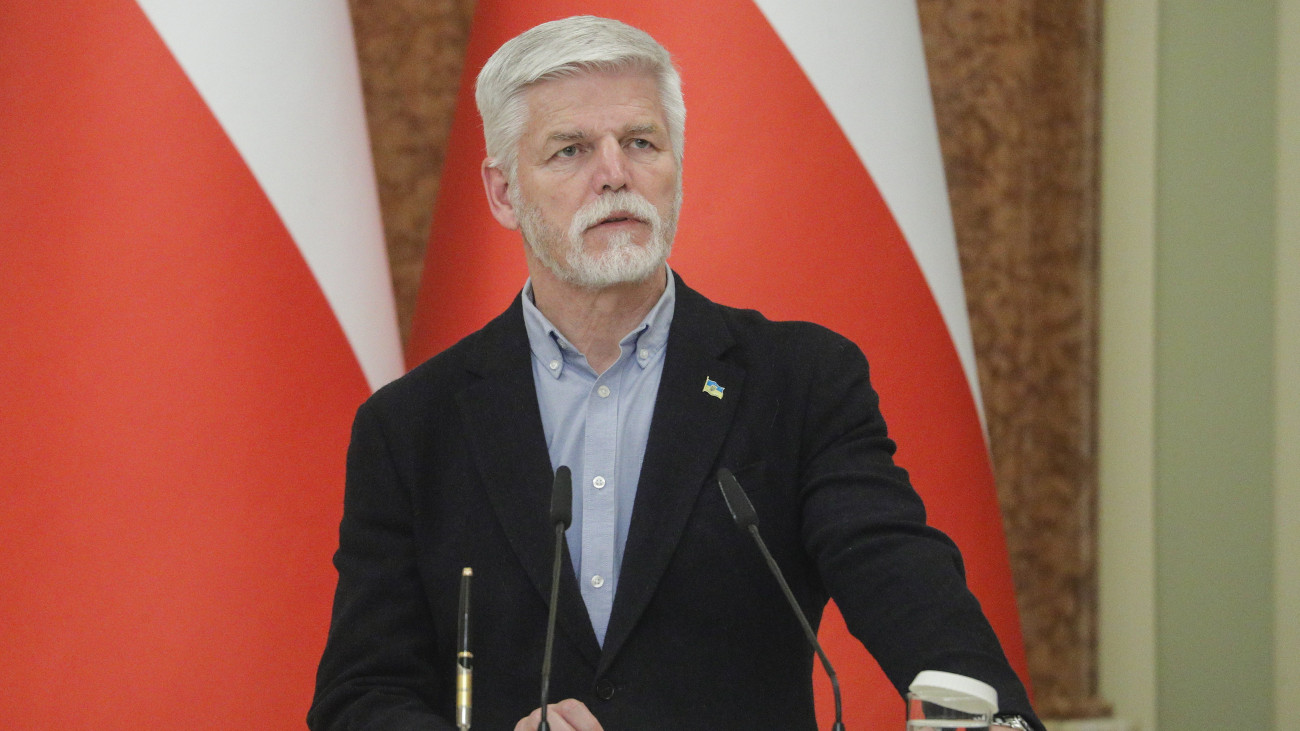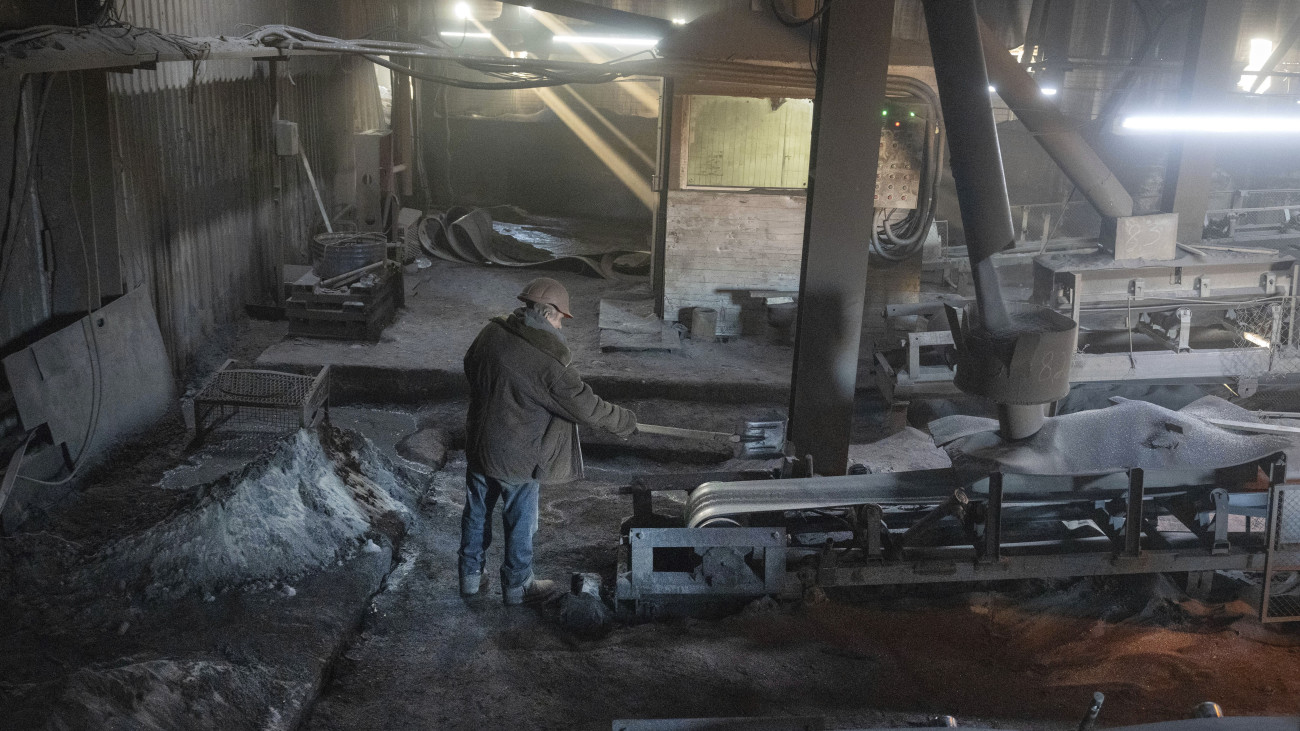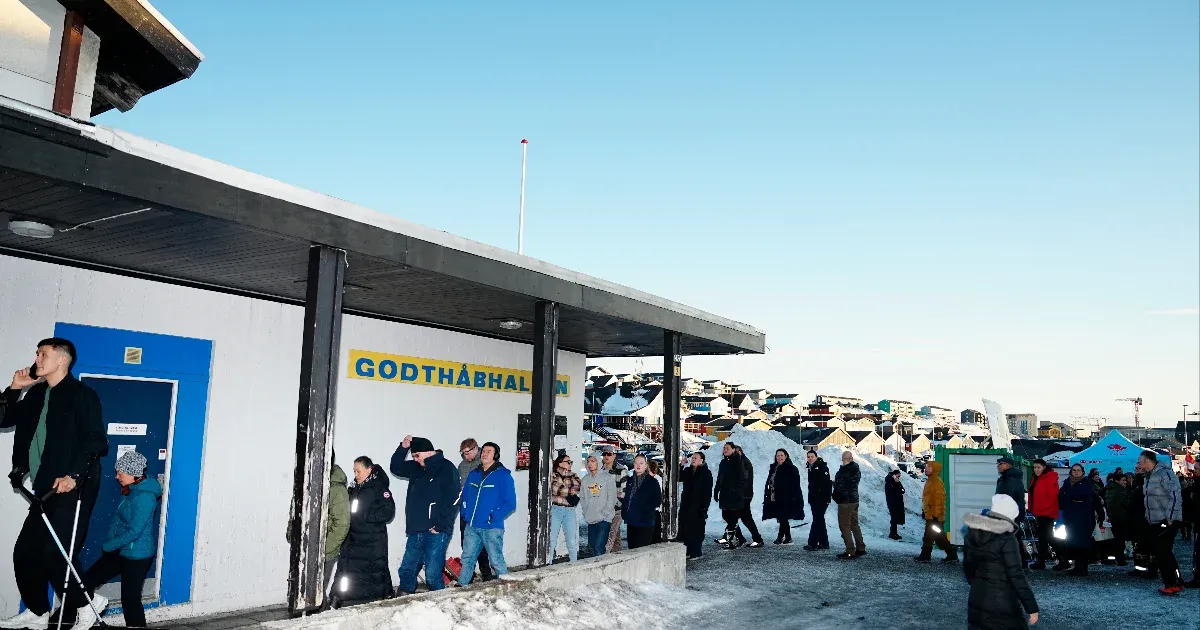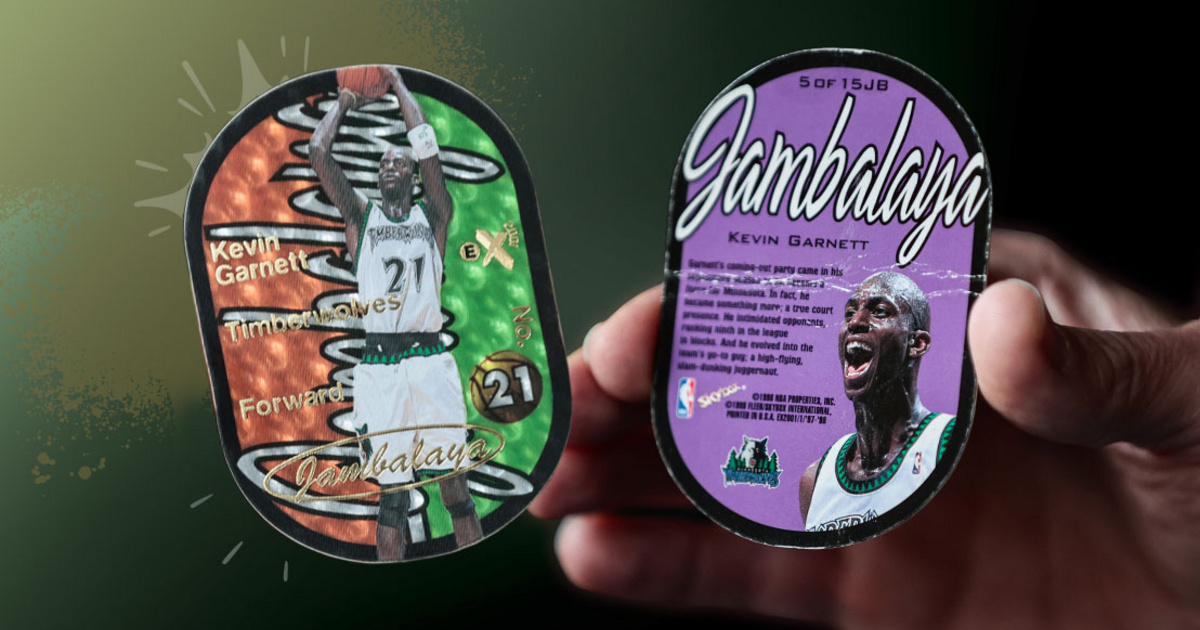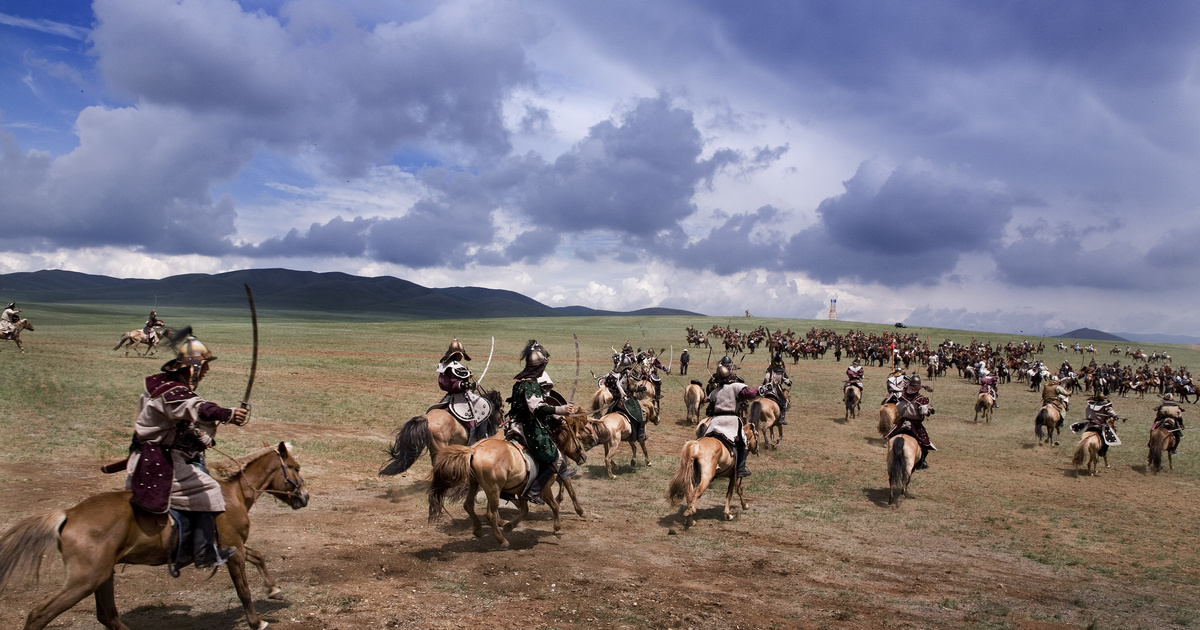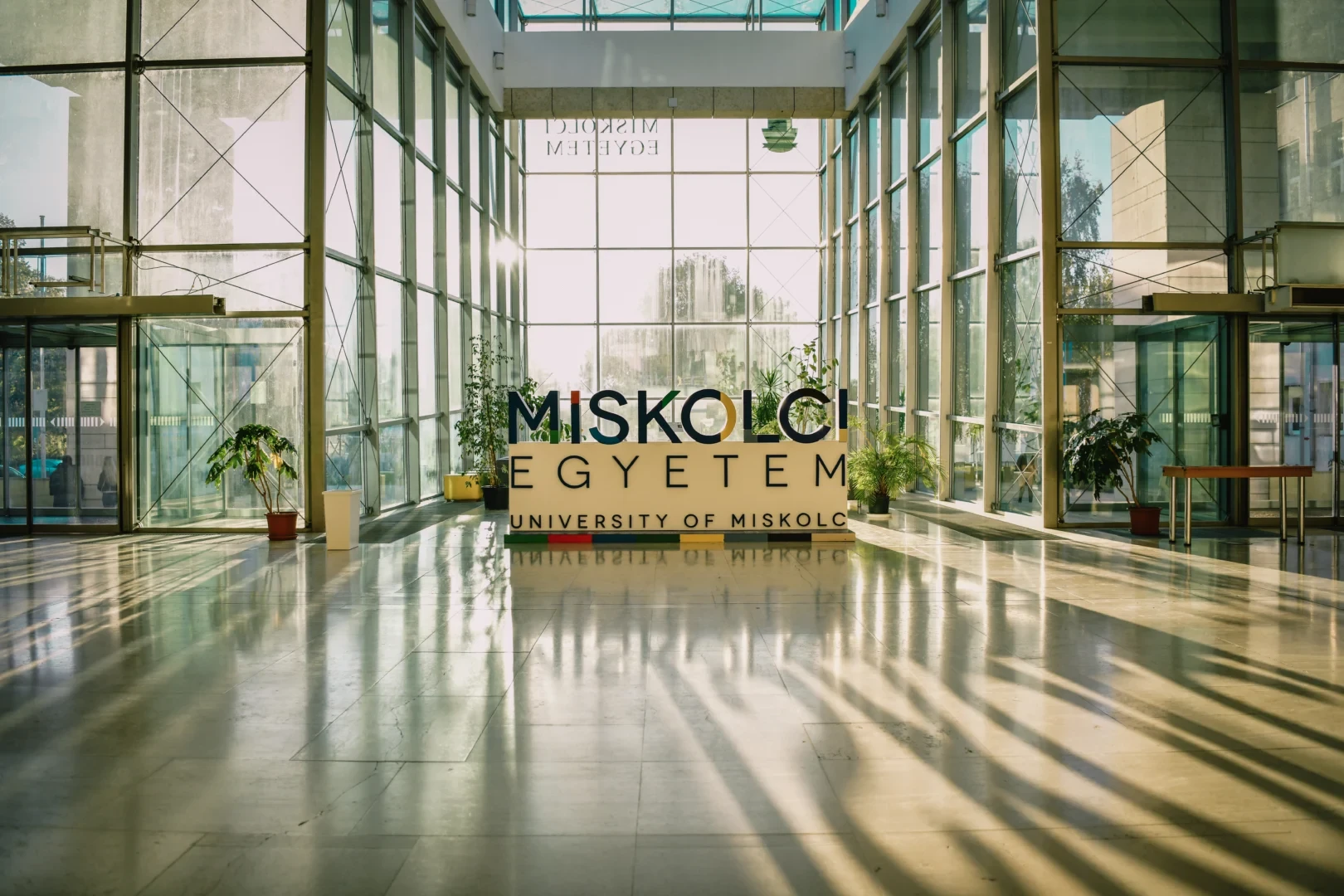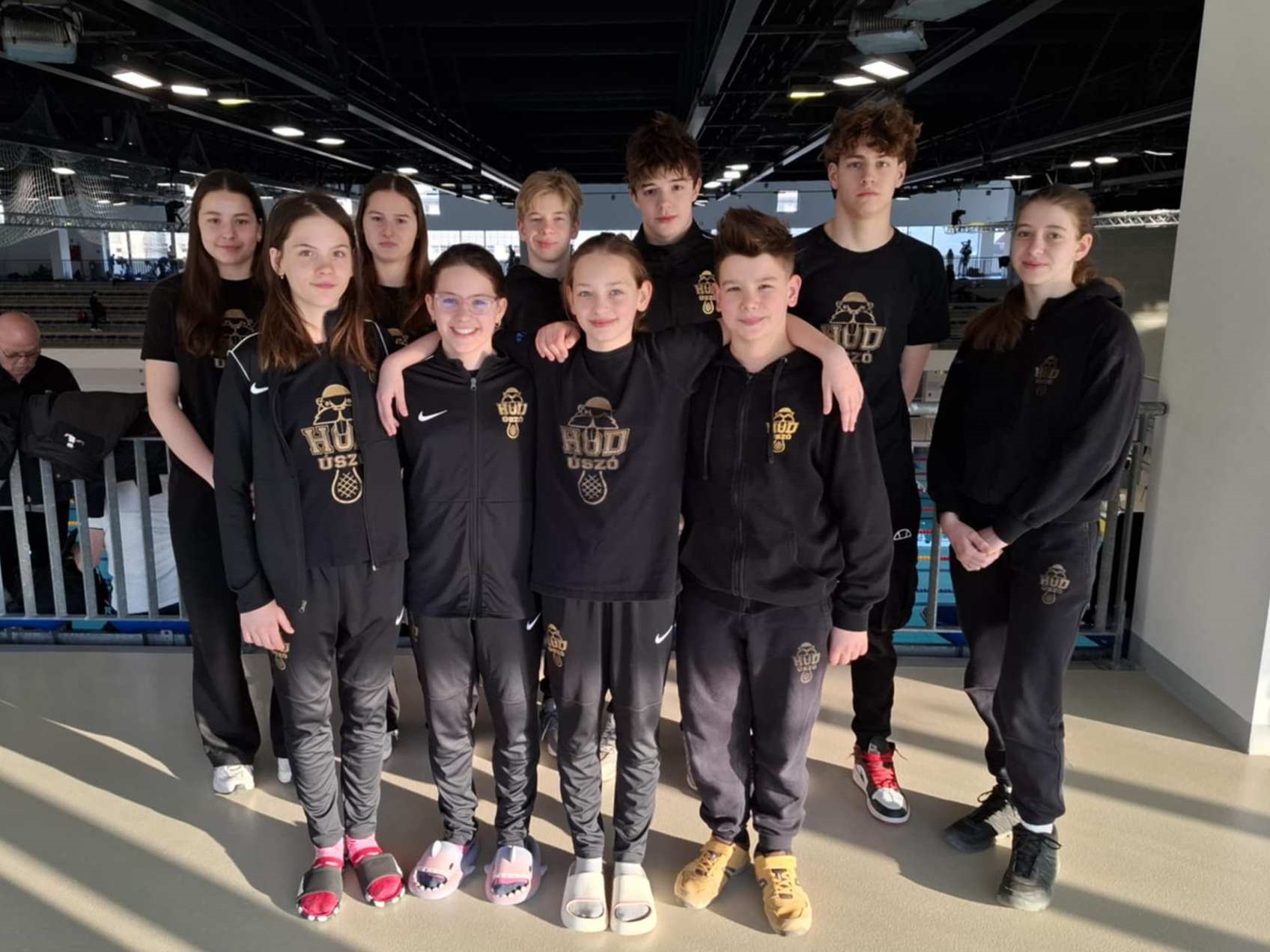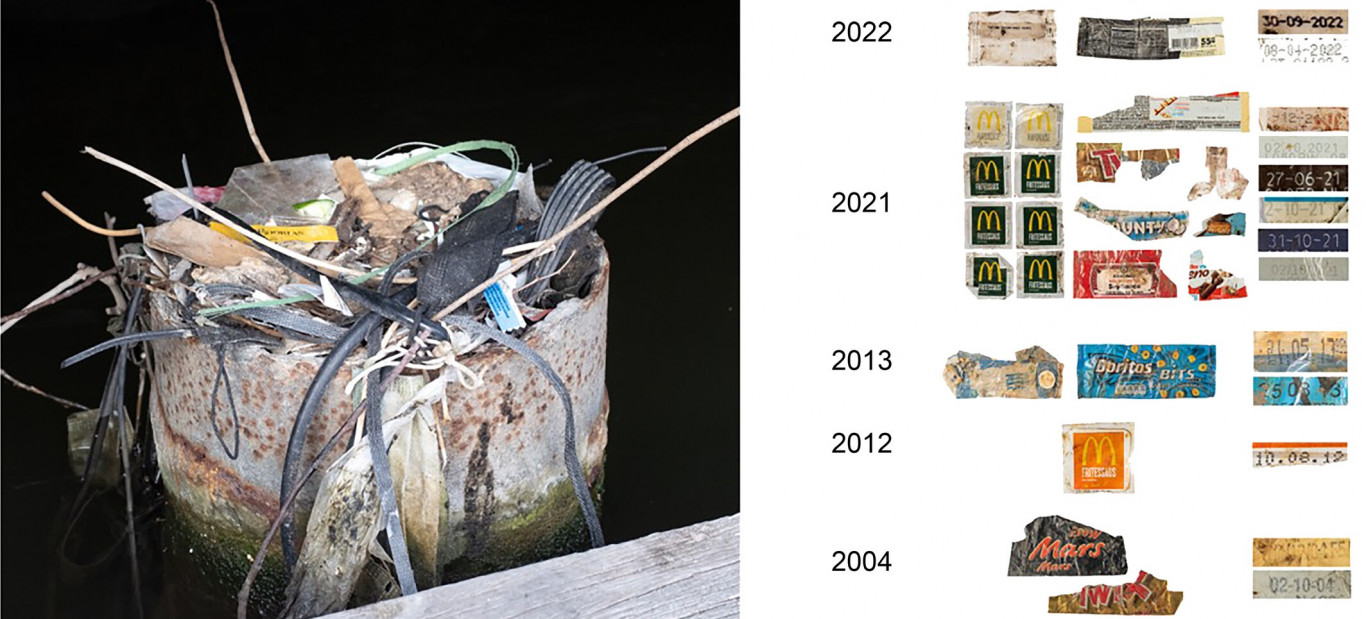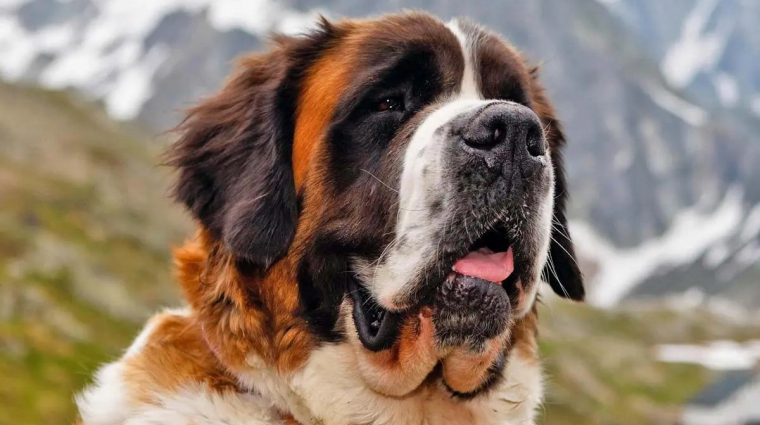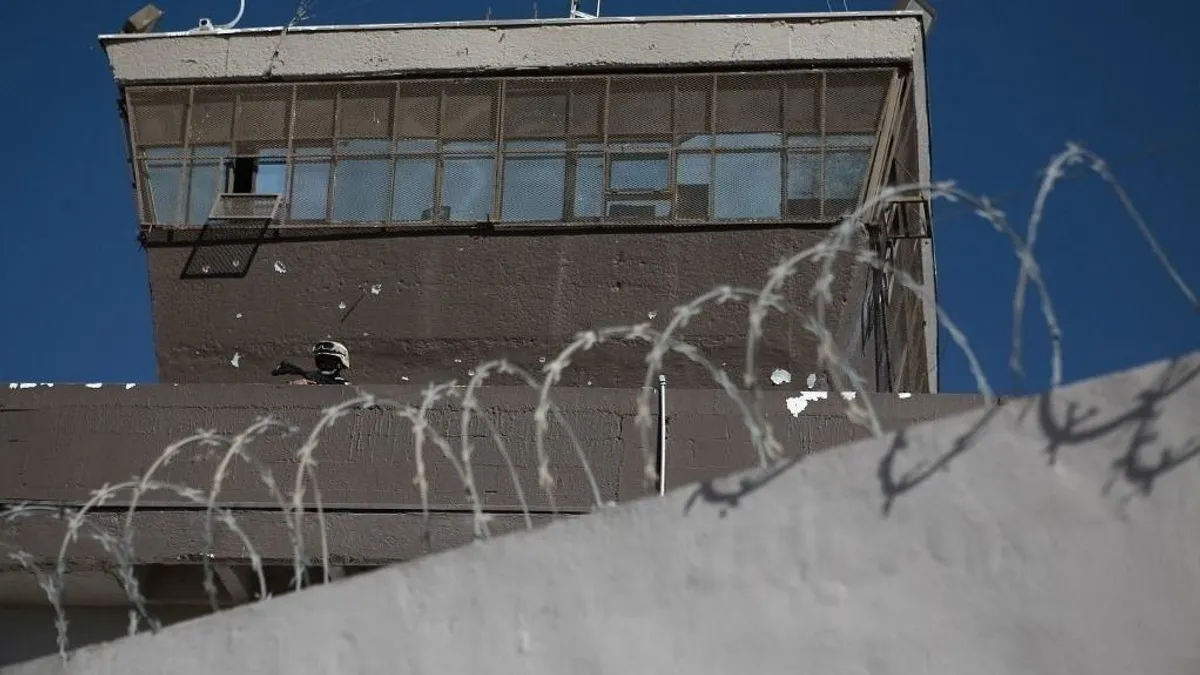For the first half of the trip – which you can read about here – I cycled from one end of the south coast to the other. Now comes the return trip to Hella, so I can look at the highlands and the Golden Circle from there. (The tourist route connecting the island's three biggest tourist attractions, Gullfoss Waterfall, Great Geysir and Thingvellir National Park, is called Iceland's Golden Circle.)
We stopped at the end of part one, where I took a nap while photographing the sunrise on the black grass coast of the Stoxness Peninsula. When I woke up, it started to rain, I waited in vain until 11 for it to stop, and had to walk the longest distance I had to wait, 90 kilometers to Jökulsárlón, in the pouring rain. However, at least now the tailwind has helped, and the landscape still has its own atmosphere. I arrived in Jökulsárlón in the evening, escaping under the bridge from the increasingly stormy wind and rain.
The next day we were greeted with very bad weather, with very strong winds and rain, so my plan was to take the bus 200 km to Vik, saving two or three days in places I had already been. But since there was no bus that day, I had to spend another day there. Seeking protection from the wind and rain, I moved to see if I could find a place to which I could drag myself. A few kilometers away, I saw a big pipe, which I moved into at night, meaning I literally had to install the pipe.
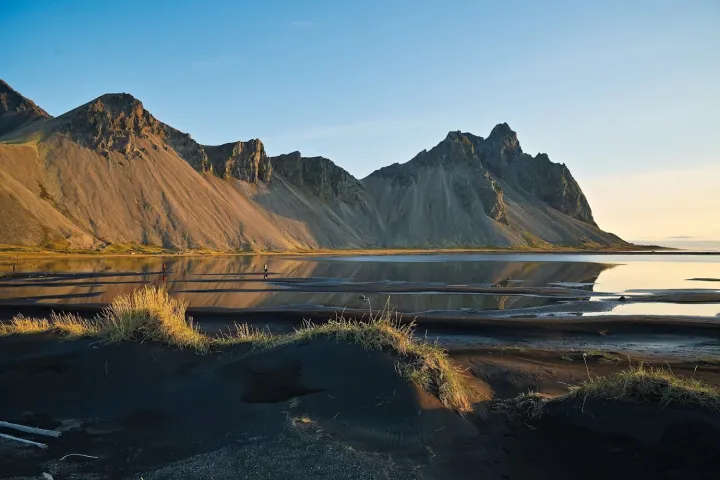

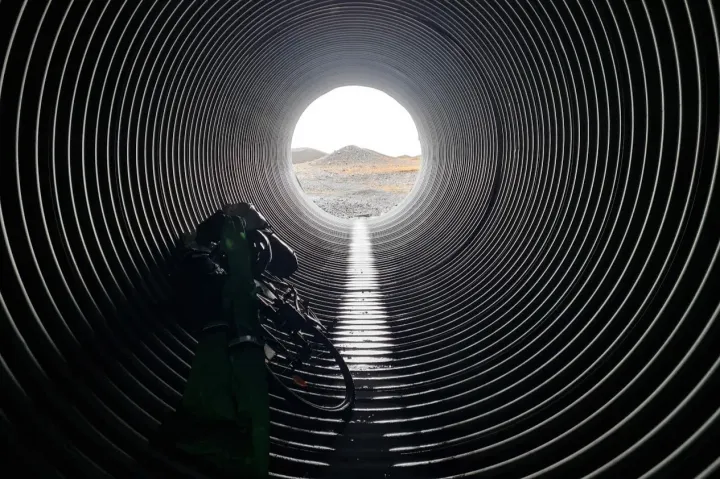
Stokesness and the Tube – Photography: Martin Ferenc
In the morning, the rain stopped, so I returned to Diamond Beach to take some photos of the ice, then continued on to the next bus stop, 50 kilometers away. On the bus, I met a bike I had seen before: Tim's tent was destroyed by the storm, so he had to turn back.
I got off in Vic, but there was such a storm on the coast that it almost capsized even when pushing the bike. So I stopped by a restaurant and waited to see if he was in the front. It was evening, the restaurant was closed, and the workers came out – and one of them, a Polish girl, asked if she needed help. I'm stuck here, waiting for the storm to pass, I answered. He called someone and found me a cheap guest house and took me there. I was very happy about this – it was difficult to pitch a tent in this hideous storm. That day ended in two days, as the storm continued to rage the next day, and the rain did not stop until the third day.
Finally the clouds broke, so in nice weather, with a tail wind, I continued towards Skógar, where I saw the Kvernufoss waterfall. In the afternoon, taking advantage of the pleasant weather, a tailwind, less traffic, and the moonlight shining behind me, I continued walking until late evening, all the way to Seljalandsfoss. From there, the plan was to turn off the main road to Hella and head up into the highlands to see the magical Siguldugljufur Valley.
The problem started when I got off the main road and it became clear how strong the seemingly light tailwind was; Then I followed the fact that I ran out of asphalt quickly on the 268, even though I expected it to be a good road for a long time. The weather was nice and sunny, and the landscape around me could also be beautiful: small forests planted to reduce erosion with colorful trees and shrubs, among them a few hidden wooden huts, and in front of me a rusty-red hill jutting out of the mountains. In the distance, and a little to the right, are some higher bridges, and beyond them is the snow-covered Hekla – but the potholed dirt road and the increasingly strong winds make the journey more difficult.
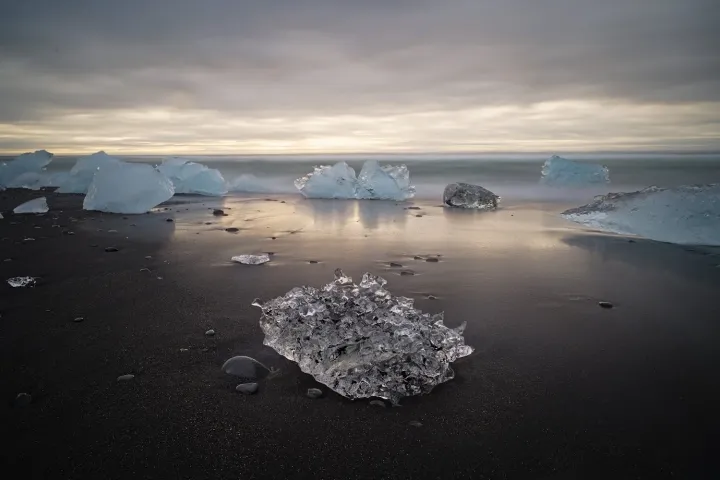
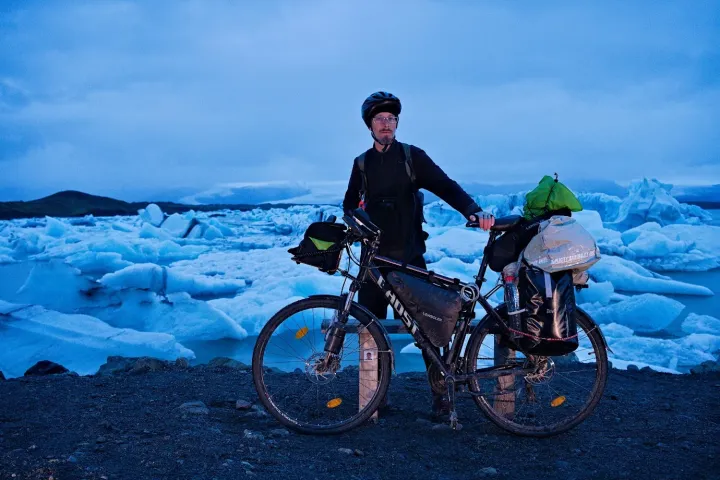
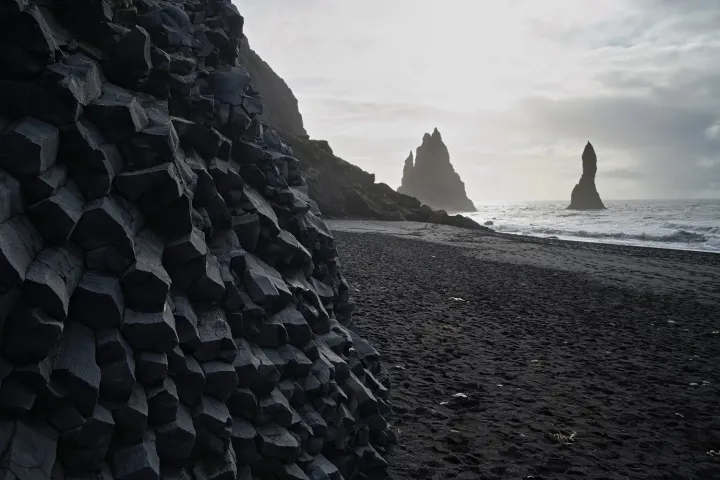
Wonders of ice and basalt – Photography: Martin Ferenc
At the plateau we reached at the end of the day, the wind was so strong that it was difficult to push – finally I had to turn back and find a tent spot at the bottom of the hill. After waking up in the morning, taking advantage of the light wind in the morning, I reached the asphalt road 26 in a few hours, but after a long struggle – caused by the headwind and the terrible quality of the road – I preferred to leave the go from the valley and turn back. I reached Jain Valley Falls at night.
I chose Jane when the weather was still good, because my plan was that if there was an aurora, I could take a photo of the aurora with the waterfall. I set up a tent, and while I was cooking dinner, a little mouse appeared and looked curiously at what I was doing. At first it seemed cute and innocent, but the next day it turned out that the insatiable little animal had chewed holes in my bags and tasted almost all of my food.
Jain City was beautiful with its autumn-colored trees, but the sun was not shining. I didn't want to let the weather improve easily, so I decided to wait another day. It was good to rest a little. I hid from the rain and wind in a stone hut, which was large enough to hold a mattress and sleeping bag. However, when darkness fell, it turned out that this was not a good option: she settled in the middle of the rat castle. I fought with the mice all night, and it was only in the morning that I finally managed to get some sleep.
The rain stopped, but the wind continued to pick up, especially on the escarpment where the best vantage points were. I set up the tripod and steadied it according to the wind direction, adjusted the camera and waited for a small window of cloud – but it didn't come. However, there were strong gusts of wind from another direction that flipped the stand and broke the screen.
That's enough Jane, I packed my bags and went back. At the intersection, I decided that if I was already here, it would be a shame to miss Haivos Waterfall. It was impossible to travel on the road in the light by bike, so I hitchhiked. Half an hour later, a car pulled up: it was a group of American photographers, who not only took me to the huge, stunning – and fiercely windy – waterfall, but when I said Geysir was my next destination, they offered to take me. By bike, because that's where they live. I was very pleased with this offer, because it saved me a day or two of riding against the wind, and I didn't have to worry too much about getting back to Reykjavik in time.
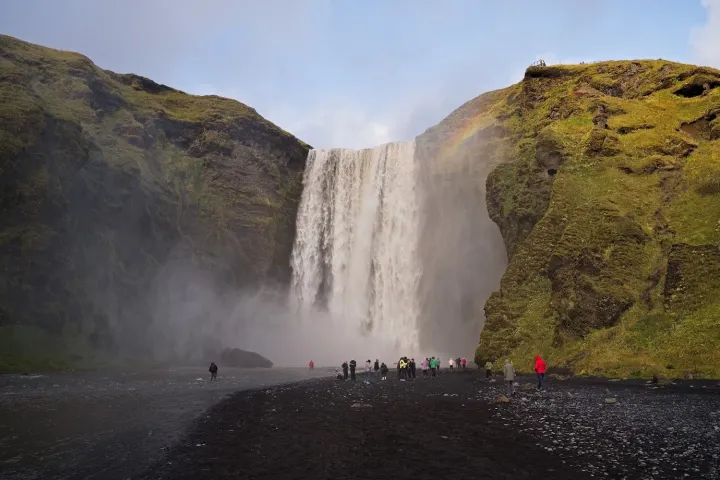
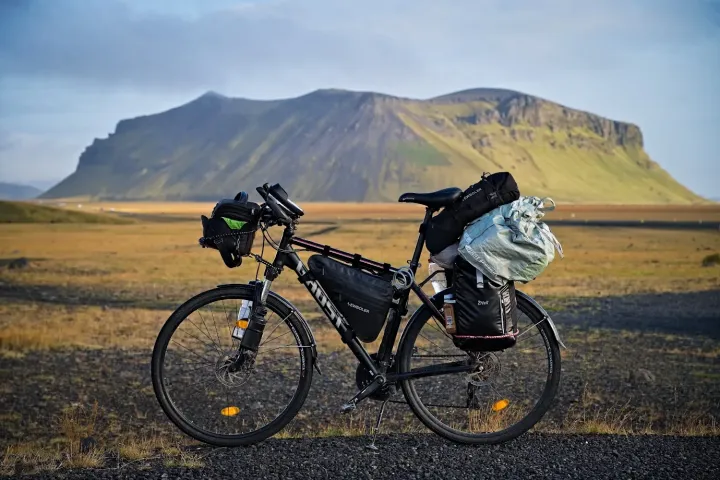
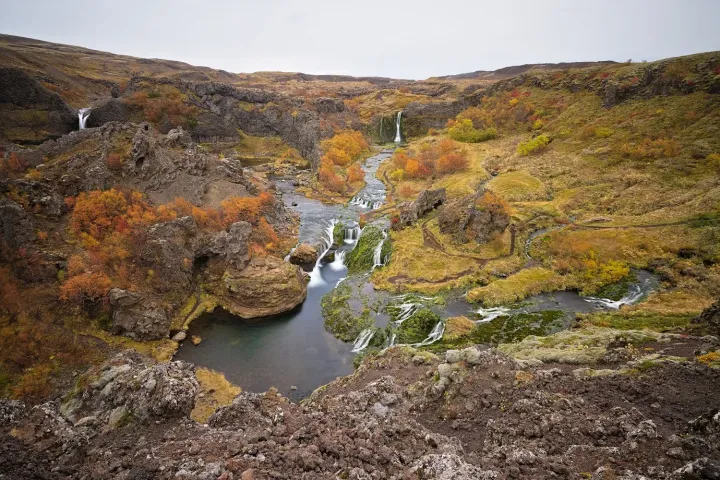
Skógafoss, bike, with Mount Pétursey and the Gjáin Valley in the background – Photography: Martin Ferenc
I saw the great sleeping Geysir and Strokkur, which explodes every 5-10 minutes, at sunrise, in front of the crowds; Then I recharged a bit in the little magical pine forest of Hokkadalur – I really missed the trees.
The Great Geysir was the first geyser to be described in modern Europe, which is why the word geyser itself comes from here. The name of the source comes from the Icelandic word geysa, which means: to flow, to erupt. During eruptions, hot water shoots to a height of about 70 metres, but a 170-metre-high eruption was also recorded a hundred years ago.
I also went to the huge Gullfoss waterfall in the afternoon, but honestly, I wasn't impressed. Not like the next, much smaller, but more beautiful, Brúarfoss, famous for its unreal blue water, which looks good even in cloudy and rainy weather.
Late in the afternoon in Laugarvatn, the dilemma arose: should I take route 37 towards Burg, then on the busy and life-threatening route 1, which I already hated on the way here, or on the smaller roads leading via the Thingvellir National Road . Garden, with the risk of the road not being paved. I tried the latter based on luck.
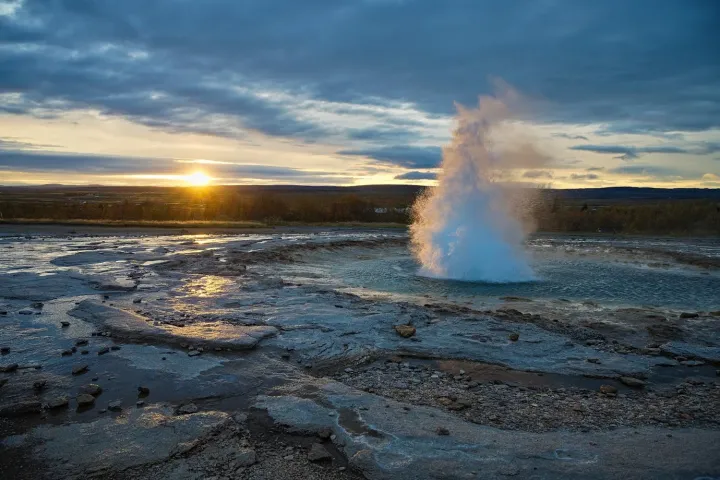
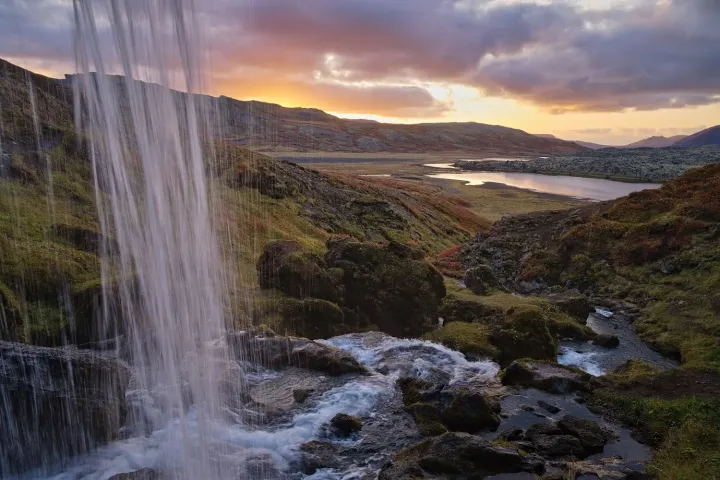
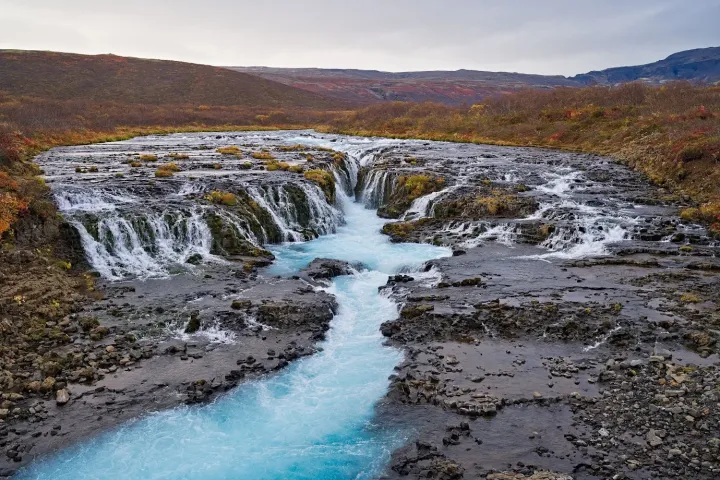
Strokkur, Silvalavus and Broarfoss – Photography: Martin Ferenc
He who dares wins: he made his way along the fresh, excellent asphalt of the plateau, while the view was framed by the mountains to my right. A small yellowish-orange light lingered on the horizon for a long time, and behind me a fat moon was about to appear. Its light reflected off the clouds and illuminated the landscape. There was almost no traffic, not even houses, I was skiing into the tailwind – it was one of the most fun turns on the road.
In the morning, I also received the parting gift of a bike ride: the sun broke through the clouds for a while, painting Thingvellir National Park in autumn colours. The garden looked beautiful, showing its most beautiful autumn colors: red cypress trees, yellow birches, green pines, and blue water.
Þingvellir National Park is one of Iceland's four national parks, and a World Heritage Site since 2004. þing means parliament. It is also listed as the Icelandic Parliament Alþingi. Vellir means plain, meaning the two together mean the flat area where Parliament meets. The national park is the most visited attraction on the island, along with the golden Gullfoss waterfall in Hungarian.
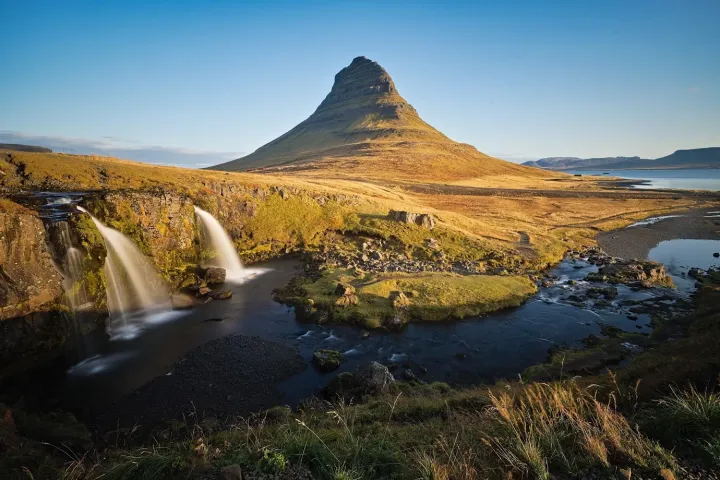
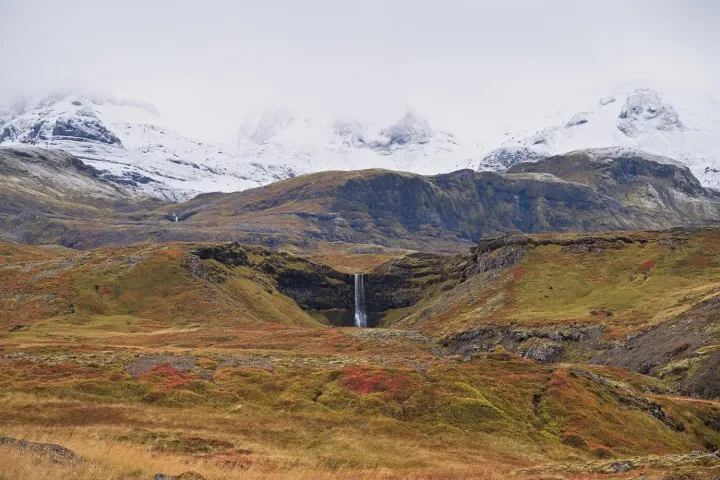
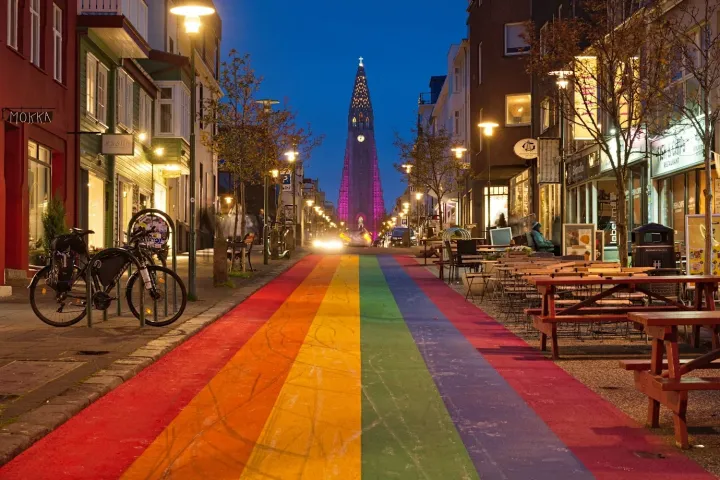
Kirkjufell, Grundarfjordur and Reykjavik – Photography: Martin Ferenc
Unfortunately, the sunlight was short-lived, although as I waited for another window of clouds, the clouds kept getting thicker and denser, until in the afternoon they began to appear. I returned to Reykjavik in the afternoon and evening in the rain on Hills No. 36.
But why should you go on a bike ride in a windstorm?
After reading the report, the reader may wonder: What is the meaning of going on a bicycle tour in the fall amidst frequent rains and suffering from strong winds? The answer to this is that during the drier but brighter summer months, the northern lights are not visible until the end of August. However, if someone wants to see or take pictures of the northern lights, they should venture out in September, when there is still a chance for the weather to improve, but most likely the winter weather, which becomes ruling time from October, will also be when wind storms are common. At a speed of 100 km/h or more. (A record wind speed of 262 km/h was measured in January 2018.) Icelandic tour operators also start Northern Lights viewing tours (by car) from mid-September, with November being the most suitable for this purpose. Bottom line: You have to fight for the northern lights in Iceland, especially by bike.
The tour route can be zoomed in on the map:
You can comment on the post and recommend other good places Also on Szépkilátás' Facebook pageAnd like the page if you haven't already! Questions and tips can come here too. For more visual there The YouTube-, Instagram Obsession Our page on Tik Tok.
More adventurous bike tours in Szépkilátás:




